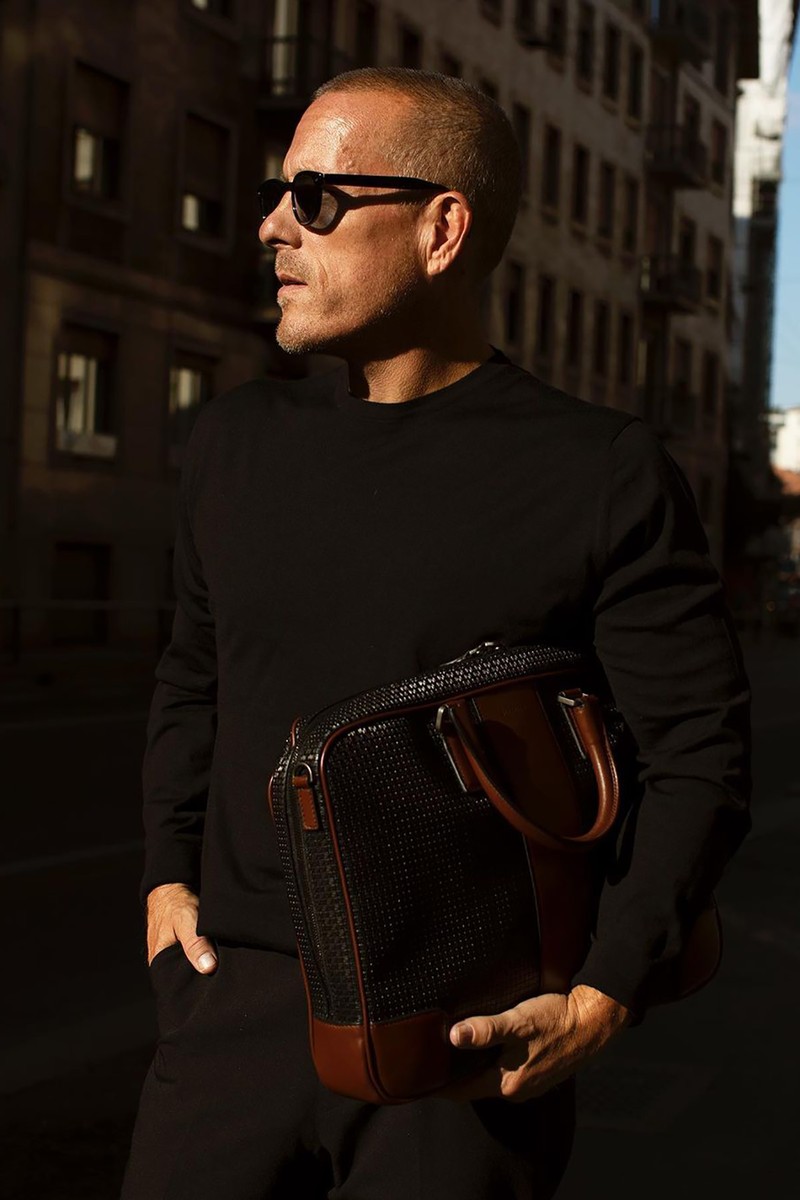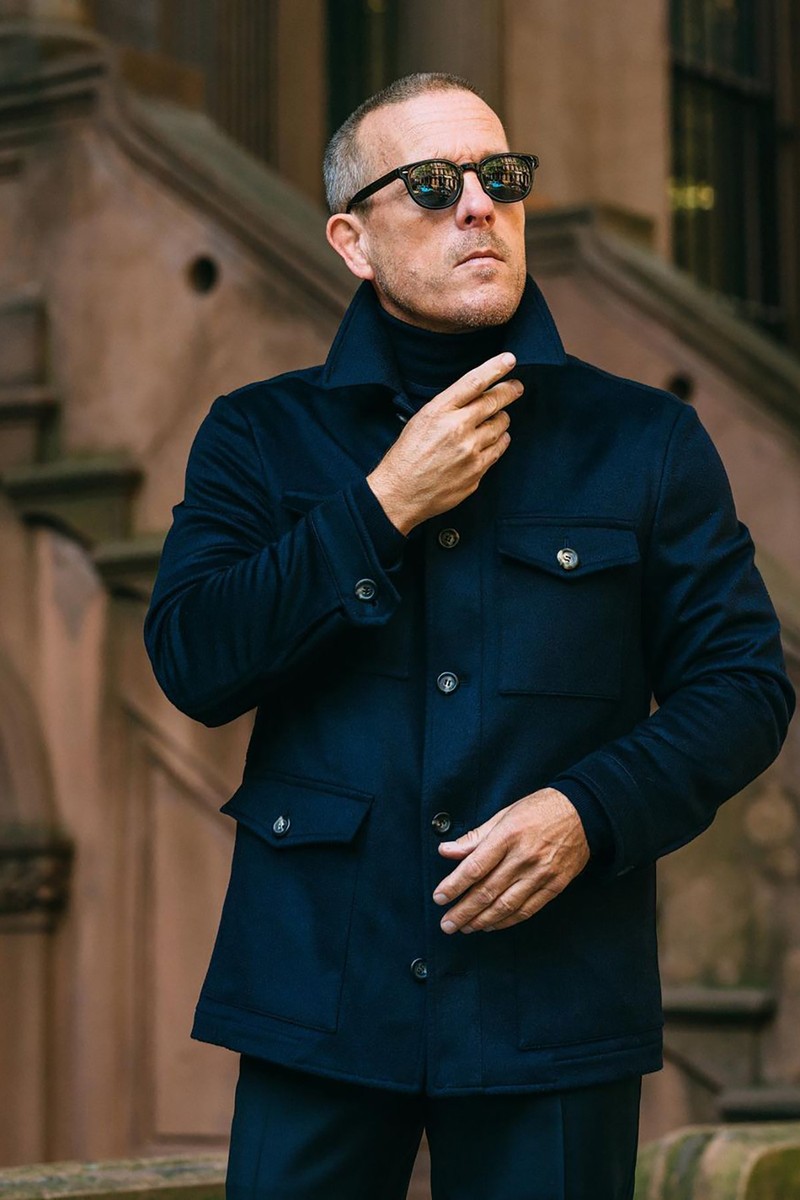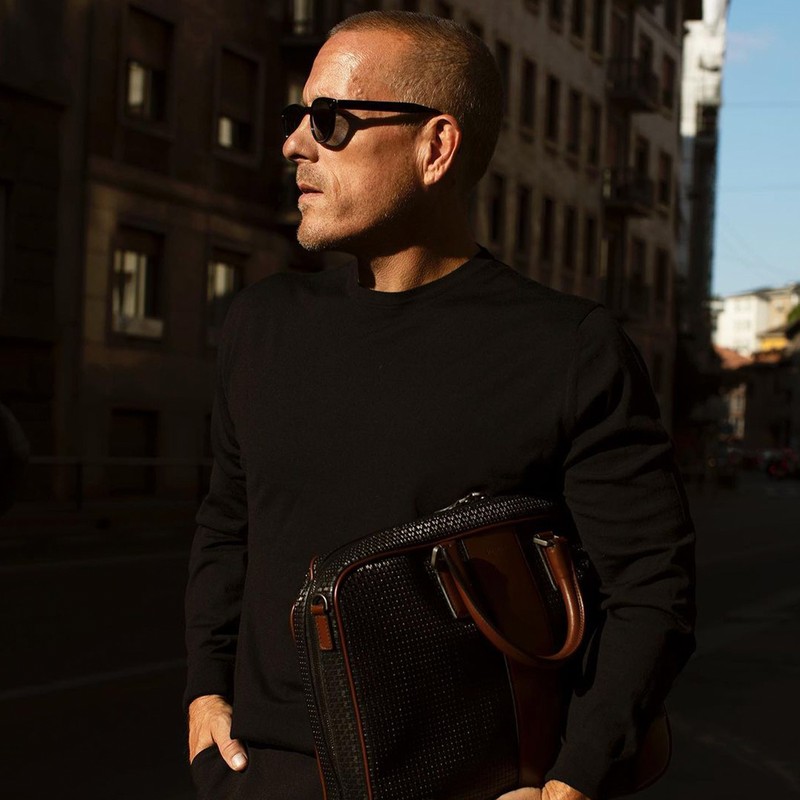SLMan Meets… The Sartorialist
Growing up in Midwest America, fashion seemed so far from anything I knew. I would see people in magazines that didn’t look like the people I knew and the places they were in didn’t look like anything around me. Compared to Indiana, Italy and Capri seemed exciting, brimming with beautiful people and beautiful sights. I thought to myself, why am I not there? My career has led me to spend a lot of time in those once far-off places.
I like the mystery of shooting normal people on the street. I like the challenge and the spontaneity that comes with it. Shooting an editorial or an ad campaign, there can be a lot of creative restrictions; shooting on the streets couldn’t be further from this. I’m making all the decisions and I’m the editor. The kind of photographs I take are much more honest – it’s what I want to shoot. ‘Real people’ appreciate when there is honesty behind an image.
I don’t preach on fashion or style and I don’t comment a lot on my photos as I think everyone takes their own story from them. They start a story themselves and I think this is why social media aligns so well with my photographs. Starting out, I would look at the works of Steve McCurry and other famous street photographers from 1930s New York, and I would think about the life beyond the image. This storytelling is how I approach my own work.
I want people to look at my work and ask questions. This is one of the main reasons I chose to do my book on India, so I could challenge myself and my audience to see a place in a different way with unexpected images. I get a lot of people saying they’d never seen India that way or that they really want to go to India now and see it for themselves.

Before my street photography career, I’d already worked in fashion for 15 years. I worked for Valentino and also had my own showroom. I grew up loving fashion, so by the time I started The Sartorialist in 2005 I had a very clear idea of what I liked. I taught myself how to capture a look quickly, understanding what the viewer should be looking out for – whether that is the hair, the accessories or the outfit.
Back then there was only Bill Cunningham shooting in New York and Paris. I looked at his work in a critical light, and I picked up on different ways to shoot the same subject – the same way one cook chooses to make the same recipe differently from another cook. I think it was instantly recognisable that mine was a really new way to shoot.
Almost immediately, I had pages in GQ and Esquire – and Style.com sent me to Europe. There was an immense amount of pressure. I couldn’t make any mistakes. This is what pushed me to improve and be clear on what I wanted the audience to see in my work.
The Sartorialist took off because I’m very picky about fashion. I wasn’t trying to prove a point with it, but I’m able to find something in the person I’m shooting and understand why they chose to dress in a certain way. Social media really helped it become a success and people kept coming back because they wanted to see who I would shoot each day.
/https%3A%2F%2Fslman.com%2Fsites%2Fslman%2Ffiles%2Farticles%2F2023%2F04%2F230220missionthesartorialist01099.jpg?itok=00J9QmG7)
Street style connects because it shows everyday people. We know fashion is the runway shows and collections, but it doesn’t move as fast as people think with regards to street style. I still have people tagging me in my photographs from my first book taken back in 2009. It’s great for people to be inspired by what other people around them are wearing rather than a runway.
I have always been critical of my own style. I used to do more of my own outfits but I would always find fault! I wear a lot of navy today, with the occasional grey. I find these are colours that work well for me and help me to blend into the background when I am out shooting. Navy is not as severe as black but still chic. Also, fit is everything. A suit could be $500 or $5,000 but, if it doesn’t fit right, then it just doesn’t work.
I have a small wardrobe that works really well. That’s why I’m excited to be working with Émigré, which is a new apparel, accessories and lifestyle brand designed to make business travel better. The collection enables a seamless and stylish transition between meetings, locations, climates and destinations – it’s very versatile.
When I shop, I’m always thinking about quality and versatility. I used to shop all over the place but now I buy little and take care of the pieces I buy. I always advise finding a good tailor and looking at ways you can blend new pieces with your existing wardrobe. It’s all about bringing new life and a new perspective to your wardrobe.

I live in Milan and this is where I feel most inspired. It always feels like you’re a few steps away from someone in the world of fashion, design or publishing. This morning, I saw a super elegant elderly woman with beautiful white hair in a cashmere coat and soft tan pants. I see style and beauty in 80 and 90 year olds in Milan, which is at odds with the youth-obsessed US.
It’s difficult to assess the new fashion influencers. They look good in their clothes, but I don’t think they necessarily make people think as much as real street style does. At least, not in the way we did in 2009.
Street style photography is not just for fashion weeks. I shoot all the time. I was up early shooting this morning. I enjoy going out and shooting because I can’t help it when I see style. I like the challenge and I work extremely hard. I’ve worked in offices before and I know how lucky I am to be able to walk around shooting in the beautiful weather.
Check out the Émigré collection here.
Follow the Sartorialist on Instagram.
DISCLAIMER: We endeavour to always credit the correct original source of every image we use. If you think a credit may be incorrect, please contact us at [email protected].


